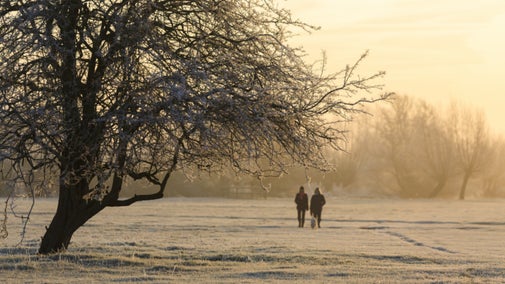Flatford and Constable country walk
Suffolk
Explore the picturesque Stour Valley and Dedham Vale on this relaxing walk, visiting the area made famous by the 18th-century paintings of John Constable, England’s foremost landscape artist of the time. See Flatford Mill, Willy Lott's House, the site of The Hay Wain painting, and visit the village of Dedham, where Constable went to school.
Near to
FlatfordStart point
Manningtree Station CO11 2LE. Grid ref: TM093322Trail information
More near here
Pin Mill nature walk
Enjoy a peaceful walk through woodland and heathland and discover spectacular views of the River Orwell on this tranquil walk at Pin Mill, near Ipswich.

Lavenham to Long Melford railway walk
Walk amid wild flowers, birds and animals along the disused Great Eastern railway line between two medieval ‘wool’ villages, starting at the Guildhall and finishing at Melford Hall, Long Melford.

Melford Hall countryside walk
Enjoy views of open fields, gently rolling hills, beautiful vistas, distant churches and clear running brooks on a walk through Suffolk countryside.

Kyson Hill and Kyson Point walk
A short walk through woodland, mudflats and upper estuarine ecosystems in this unique corner of the Suffolk coast.

Get in touch
Our partners

We’ve partnered with Cotswold Outdoor to help everyone make the most of their time outdoors in the places we care for.
You might also be interested in
Walking in Suffolk
From strolls around famous historic sites to wanders through patchworks of purple heather, these are some of the best winter walks in Suffolk.

John Constable at Flatford
Discover the life of John Constable and his family. Stories of a happy childhood, heartbreak and success in the art world help to paint a picture of what his life was like.

Melford Hall
An eclectic home, with stories of naval exploits and Beatrix Potter set in picturesque gardens.

Kyson Hill
Escape from it all at Kyson Hill

Lavenham Guildhall
One of the most spectacular timber framed buildings of medieval England at the heart of village life

Staying safe at National Trust places
The special places in National Trust care sometimes come with a few risks for visitors, be it coastline or countryside. Find out how to keep safe throughout your visits.

Follow the Countryside Code
Help to look after National Trust places by observing a few simple guidelines during your visit and following the Countryside Code.

Cotswold Outdoor: our exclusive walking partner
Learn about the National Trust’s ongoing partnership with Cotswold Outdoor. Find out how they help us care for precious places and the exclusive discount available for National Trust supporters.




